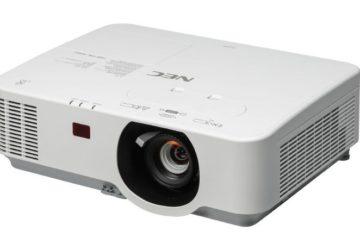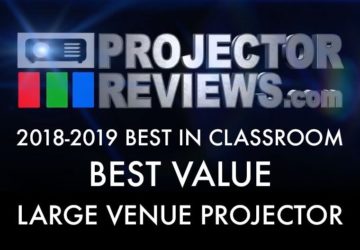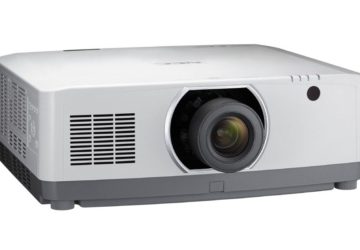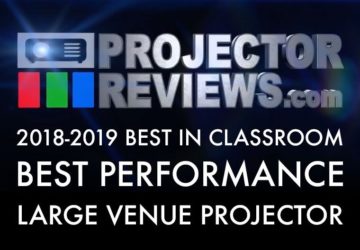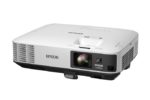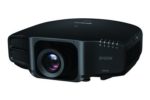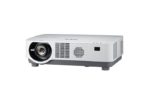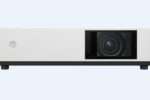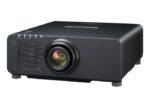Larger Venue projectors are a key part of the overall education projector market. Look for them in those large and largest college/university classroom/lecture halls and labs, and even affiliated museums. But these more powerful projectors, although unlikely to be used in K-12 classrooms, may end up in K-12 school auditoriums or large multi-purpose spaces.
Lower powered, and often less featured education projectors, typically can’t handle the job in those really large classrooms and K-12 auditoriums. But, all of these can. Winners in this Class should have no problem handling a typical university classroom or lecture hall with a hundred, even two hundred, with the brightest of them tackling four hundred seat lecture halls as well. We assume, of course, that the rooms have some reasonable control over ambient lighting.
Until recently, most sufficiently high-powered projectors were also extremely expensive and incredibly capable, featuring expensive interchangeable lenses, and often other features. This year, we’ve seen more segregation in the market. The high-priced, feature laden projectors are still the majority, but companies are bringing out more high-power projectors that are leaving out expensive features such as interchangeable lenses, lens shift, edge blending, etc., and other such features that aren’t needed in most large classrooms. True, though, that some of those large rooms are best served by mounting projectors where a standard zoom lens my not be practical, so that's when you need a projector with multiple lens options.
This group of five projectors, including one that is also in the Standard Class, is a mix of projectors with and without interchangeable lenses. This year, more we have two solid state projectors in the mix – the Casio XJ-L8300HN, and the Optoma UHZ60 (a 4K UHD resolution). Three of these projectors are WUXGA – 1920x1080. True, all of them have "siblings" with different resolutions, including lower cost WXGA models. Not every university and college classroom needs WUXGA, especially if budgets are tight.
Two of our entries are 4K UHD models: The Casio and Optoma. Two differences of note between those: The Casio claims 5,000 lumens vs the Optoma's 3,000, and that the Casio's light engine is a hybrid LED/Laser phosphor, while the Optoma is the more traditional laser phosphor type. I should mention that there's a third laser projector in this report – the Dell S718QL, and it's even 4K UHD as well (and 5,000 lumens), but it is an ultra-short design, so more directly "competes" with other UST projectors.
Normally, I wouldn't drop a 3,000 lumen projector into the larger venue class, however, because of the laser engine; it will hold its brightness with little loss for years, not months. Also "all else being equal," laser light engine projectors seem to have more punch than lamp based projectors with the same lumen counts. They seem brighter. I am thinking that, so far, there isn't that much demand for 4K UHD projectors in higher education. The exceptions are most likely to be in the sciences, engineering, architecture, and some other majors where either resolution or overall picture quality demands are higher than most, such as film. As a result, I suspect that the demand for 4K UHD (which of course is not native 4K) might be more limited into smaller, advanced classes, where the Optoma can get the job done.
If you do not need WUXGA or 4K UHD, consider that the feature sets between a WUXGA projector and a WXGA projector from the same series are typically almost identical. Our comments and our Awards would hold true if, instead, we had reviewed a different projector in the same family. That is, of course, one assumes that pricing will also be relatively consistent. Virtually any series (other than UST types) that offers a WUXGA projector will have a WXGA version.
If you need lens options for your installation, in this year's batch only one – the NEC PA653UL, and that's also why it’s an especially expensive model.
We wish to thank Epson America for sponsoring this year’s Best Classroom Projectors report.

